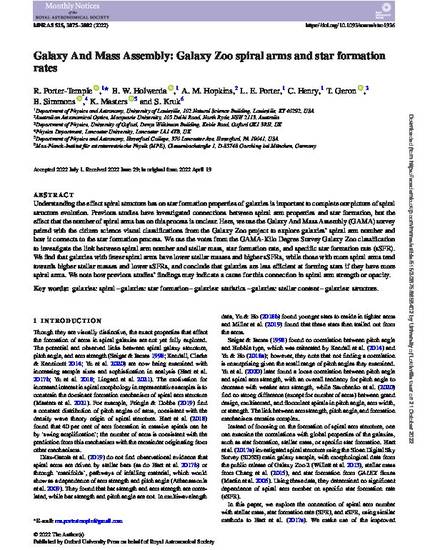
Understanding the effect spiral structure has on star formation properties of galaxies is important to complete our picture of spiral structure evolution. Previous studies have investigated connections between spiral arm properties and star formation, but the effect that the number of spiral arms has on this process is unclear. Here, we use the Galaxy And Mass Assembly (GAMA) survey paired with the citizen science visual classifications from the Galaxy Zoo project to explore galaxies’ spiral arm number and how it connects to the star formation process. We use the votes from the GAMA-Kilo Degree Survey Galaxy Zoo classification to investigate the link between spiral arm number and stellar mass, star formation rate, and specific star formation rate (sSFR). We find that galaxies with fewer spiral arms have lower stellar masses and higher sSFRs, while those with more spiral arms tend towards higher stellar masses and lower sSFRs, and conclude that galaxies are less efficient at forming stars if they have more spiral arms. We note how previous studies’ findings may indicate a cause for this connection in spiral arm strength or opacity.
R Porter-Temple, B W Holwerda, A M Hopkins, L E Porter, C Henry, T Geron, B Simmons, K Masters, S Kruk, Galaxy And Mass Assembly: Galaxy Zoo spiral arms and star formation rates, Monthly Notices of the Royal Astronomical Society, Volume 515, Issue 3, September 2022, Pages 3875–3882.

© 2022 The Author(s) Published by Oxford University Press on behalf of Royal Astronomical Society.